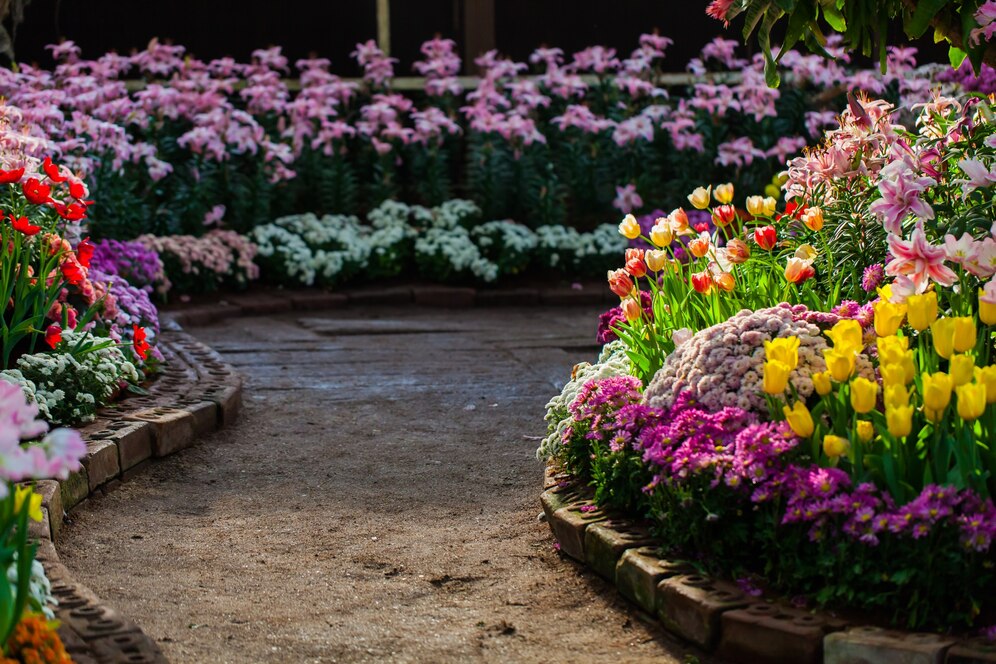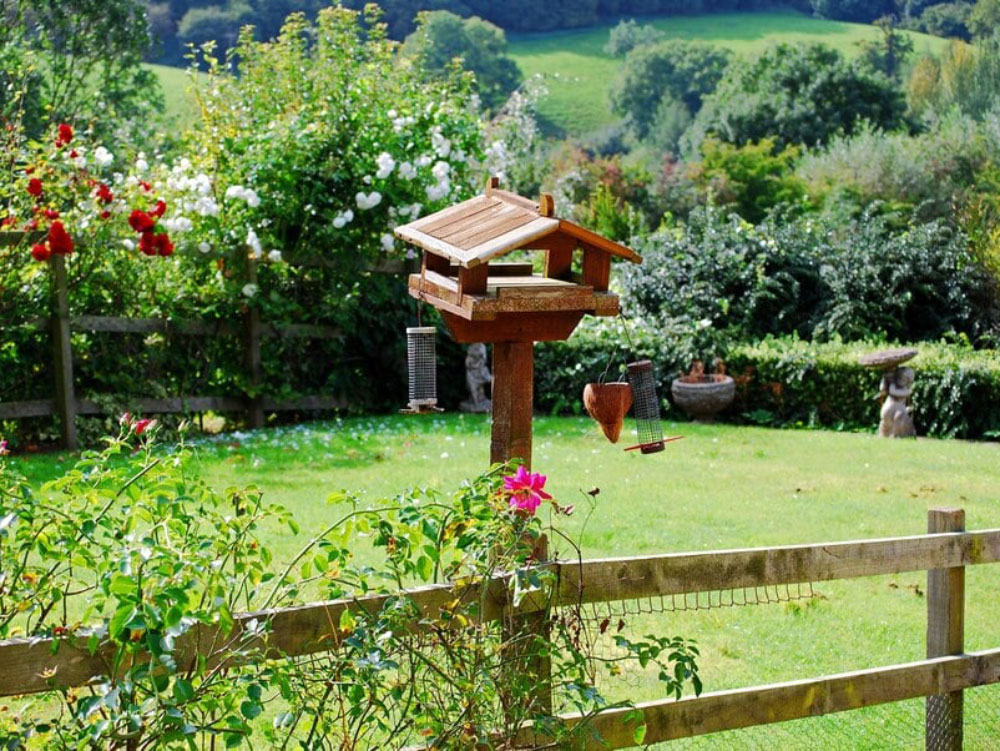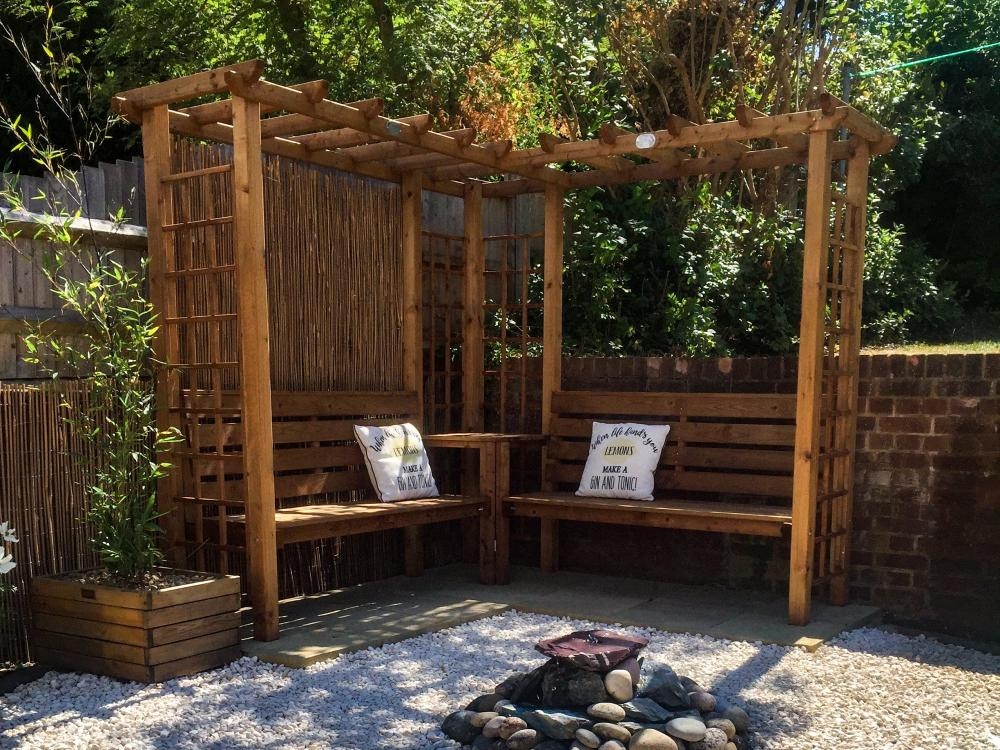Thoughtfully designed sensory gardens can offer a calm, structured environment that promotes relaxation, emotional regulation, and overall mental health improvement. While these gardens can provide specific benefits for individuals with sensory sensitivities, they also offer universal advantages for anyone seeking a peaceful retreat from daily stress.
Using elements like fragrant lavender, rustling bamboo, and soft-textured plants, these gardens provide a space for self-soothing. They invite exploration, engaging the senses through touch, smell, sight, and sound, and help foster a deeper connection with nature.
This blog explores gardening’s benefits, sensory-friendly features, and how plants, structures, and furniture create beautiful, inclusive spaces.
The Benefits of Gardening for Health and Sensory-Friendly Design
Gardening offers a wealth of benefits for health and sensory well-being, particularly within a thoughtfully designed space. Some of the ways in which gardening and gardens helps include:
- Stress Reduction: Gardening has been shown to reduce cortisol levels and improve mood. Nature provides a calm retreat for individuals who may experience sensory overload in everyday environments.
- Sensory Stimulation & Regulation: Having a variety of textures, scents, colours, and sounds in your garden can provide positive sensory engagement, helping with self-regulation and relaxation.
- Routine & Structure: Gardening offers repetitive tasks and predictable routines that can be comforting and reduce stress.
- Motor Skill Development: Activities like digging, planting, and watering support fine and gross motor skill development.
- Fine – smaller movements in hands, fingers and wrists
- Gross – Larger coordinated movements using arms, legs and torso
Key Sensory Garden Features:
Sensory gardens, stimulate and engage all five senses: sight, taste, smell, touch and sound. They provide an excellent way to ground yourself, connect with nature, and heighten awareness of your surroundings.. They can either be calm spaces or busy with elements to help stimulate activities. Some of the key features of a sensory garden includes:
- Encouraging Connection with Nature: Spending time in green spaces improves overall well-being and provides a quiet escape from overstimulation.
- Stimulation Areas: A quiet corner with seating, greenery, and shade can serve as a retreat from overwhelming environments.
- Soft Pathways: Using materials like wood chips, smooth paving, or grass instead of hard gravel or concrete can reduce noise and provide a pleasant walking experience.
- Varied Plant Textures & Fragrances: Incorporating different plant textures (like lamb’s ear, lavender, or ferns) allows for tactile exploration.
- Sound & Water Elements: Fountains, wind chimes, or rustling grasses create soothing background noise that masks heightened or harsh sounds like car horns, vehicle noise, and multiple conversations.
- Shade & Shelter: Creating shaded areas with trees or garden structures like Pergolas, Gazebos and Brise Soleil, can provide relief from direct sunlight. Most importantly, this helps to prevent sensory overload as it can be overwhelming or too intense.
Calming, Low-Maintenance Plants
Imagine a garden where tranquillity blooms as naturally as the flowers themselves, a space thoughtfully designed to nurture calm and well-being.
When crafting a sensory-friendly space, the choice of plants plays a crucial role in fostering this sense of calm and well-being. Several low-maintenance plant options are explored offering a variety of sensory and soothing features, making them ideal additions to any garden:
- Lavender – Calming fragrance, soft texture, and low maintenance.
- Chamomile – Helps with relaxation and has gentle, non-overpowering scents.
- Lamb’s Ear – Soft, velvety leaves that encourage tactile interaction.
- Ferns – Delicate, lush greenery that thrives in shaded areas.
- Jasmine – Sweet scent, climbing plant that can create a natural privacy barrier.

Garden Buildings & Furniture
Creating a truly supportive and sensory-friendly garden often involves more than just carefully choosing the right plant selection. Considering the designs and furniture within the garden allows you to actively shape a more intentional and adaptable space.
Thoughtfully selected garden buildings and furniture can define safe havens, encourage regulation, and invite areas for structure, relaxation and engagement to your garden.
To spark your imagination, here are some building and furniture ideas that can contribute to a calming and structured sensory garden at home:
Garden Pods or Sensory Shelters
Sometimes, the world can feel overwhelming and having a dedicated quiet retreat within the garden can make a world of difference.
Garden pods and sensory shelters provide a quiet sanctuary for individuals needing a break from social or sensory stimulation.
These enclosed spaces offer a sense of calm and security, aiding in emotional regulation and allowing for customisation with elements like fairy lights and soft furnishings.
Furthermore, complementing these shelters are outdoor bean bags and other sensory seating like hammock chairs. These provide soft and adaptable places to rest that can cater to different comfort preferences. Their versatility allows them to be easily placed in quiet corners, creating smaller, less formal safe zones throughout the garden.
Whether it’s a quiet pod or the comforting embrace of a bean bag, having a dedicated rest areas ensures that you can find a space to feel safe, calm, and regulated.
Garden Structures
Creating a sensory-friendly garden often involves thoughtfully defining different areas to cater to varying needs. Garden structures provide shade from direct sunlight and a sense of partial enclosure that can help reduce sensory overload.
Imagine the gentle dappled light filtering through a pergola or arbour lattice. This is perhaps enhanced by the fragrant blooms of climbing jasmine or the soothing greenery of ivy trained to gracefully adorn a gazebo as a vertical garden. To further define these tranquil areas and enhance the feeling of safety and privacy, consider incorporating natural fencing options.
Whether it’s the soft rustle of a hedge, the gentle sway of bamboo, or the solid presence of wooden screens, natural fencing help to create boundaries. This not only reduces exposure to potentially overwhelming external stimuli but also contributes to a more intentional garden layout, fostering a sense of security and calm.
You might even want to consider how these elements can work together. Using natural fencing creates a backdrop for a beautiful garden structure, further enhancing the sense of a peaceful area that feels safe.
Hammock Chairs or Swing Sets
For some individuals, movement is a powerful tool for self-soothing and emotional regulation.
Hammock chairs and swing seats offer a gentle and accessible way to incorporate this into a sensory-friendly garden. The rhythmic motion provides a sense of movement, which can be particularly beneficial for those who seek movement to help them feel calm and grounded.
Beyond this, the gentle rocking motion can be incredibly soothing and help to reduce feelings of anxiety.
If you’re looking for something more active that can still help your child[ren] feel secure, balanced and grounded though movement, our climbing frames are an excellent choice, offering hours of fun too.
Water Features
Water features like fountains and small ponds bring a calming presence to any garden. The gentle sound of flowing water creates a soothing backdrop that can help reduce stress. Water features stimulate the senses with soothing sounds.
Its gentle movement and shimmering light reflections create a calming and interactive garden feature. A small pond invites tactile interaction – dip a hand in cool water or explore and observe aquatic plant textures.
Overall, water features boost tranquillity and sensory appeal, creating a more peaceful, engaging environment.
Conclusion
Ultimately, a well-designed sensory garden offers a safe, calming space that supports relaxation, emotional regulation and connection with nature. By incorporating soothing plants, thoughtful structures and sensory friendly features, you can create an inclusive environment that nurtures well-being. Every detail contributes to a space where you can feel grounded, at ease, and in a place that feels secure.



